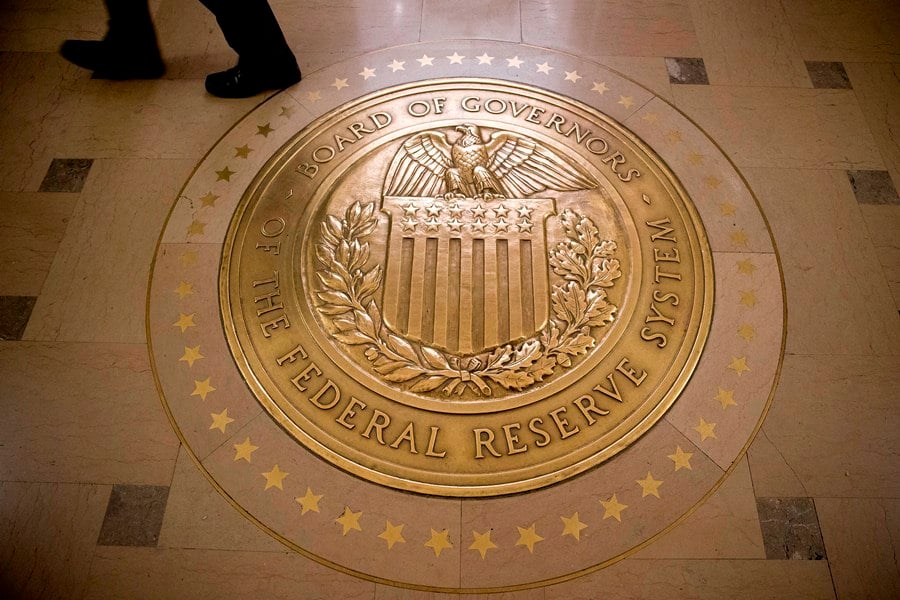Odds of Federal Reserve falling behind curve have increased
Federal Reserve Bank of St. Louis President James Bullard said policy makers should consider raising interest rates at their next meeting amid a broadly unchanged economic outlook and prospects of inflation and unemployment exceeding targets.
“You get another strong jobs report, it looks like labor markets are improving, you could probably make a case for moving in April,” Mr. Bullard, who votes on policy this year, said in a Bloomberg interview in New York Wednesday. “I think we are going to end up overshooting on inflation” and the natural rate of unemployment, he said.
The Federal Open Market Committee kept interest rates unchanged last week and halved projections for how many times it would hike this year from four times in December after volatility in financial markets and weakening global growth clouded the U.S. economic outlook. Mr. Bullard criticized the forecasts, also referred to as the dot plot, arguing that they contribute to uncertainty in financial markets.
“You really saw that over the first part of this year,” Mr. Bullard said, adding that he's getting “increasingly concerned” about giving forward guidance through those projections. “I've even thought about dropping out unilaterally from the whole exercise.”
'REASONABLY GOOD'
Mr. Bullard said he sees joblessness falling to 4.5% this year. The rate held at an eight-year low of 4.9% last month. Inflation as measured by the personal consumption expenditures index, the Fed's preferred gauge, as well as core PCE, the rate that excludes volatile components such as food and energy, will be over 2% in 2017, he said. The central bank's inflation target is 2%.
“We're in reasonably good shape” with regard to monetary policy but “the odds that we will fall somewhat behind the curve have increased modestly,” Mr. Bullard said. “We are going to get some overshooting here in the relatively near term” on unemployment “that might cause the committee to have to raise rates more rapidly later on.”
Mr. Bullard said there was a “credible case” to be made to move in March. “We didn't do it — so now we can look at April and see what the data looks like when we get to April,” he said.
The FOMC holds its next policy meeting on April 26-27. It won't be followed by a press conference, which are only held at the end of each quarter. That has led investors to discount policy action at intermittent gatherings in the past.
PRESS CONFERENCE
“It's really hurting us that we've got this kind of alternate meeting thing,” Mr. Bullard said. “I think we should make all meetings ex-ante identical. You should have press conferences at every meeting. I've long been an advocate of this.”
Fed Chair Janet Yellen has stressed that every FOMC session is a “live possibility” for a policy move.
“I take her at her word,” Mr. Bullard said. “That is on the plus side. On the negative side, there isn't that much data between the March meeting and the April meeting. So I don't know where the committee will come out.”
In quarterly estimates submitted for the March 15-16 FOMC meeting, nine policy makers predicted two rate hikes in 2016. Seven officials foresaw three or more increases this year, while one projected just one move.
Chicago Fed President Charles Evans said Tuesday that two rate steps this year are “not at all unreasonable,” while his colleague from Philadelphia, Patrick Harker, said he would like to see policy makers tightening borrowing costs “a little faster.”
“I am not revealing my dot,” Mr. Bullard said. “I want to get out of the game of how many rate increases this year.”
Mr. Bullard said his view to hold off on further increases at the first two meetings this year was driven by a decline in market-based measures of inflation expectations.
“I didn't want to be raising rates further in an environment where we had declining inflation expectations,” he said. Since mid-February, ”they have bounced back up” so “that is making me feel better. We are moving in the right direction.”







